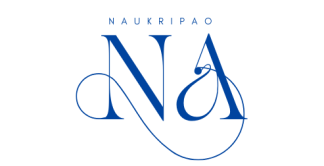
Introduction: Understanding Biodata
In today’s competitive job market, presenting yourself effectively is crucial. One way to do this is through well-crafted biodata. But what is biodata? A biodata, short for biographical data, is a document that provides a comprehensive overview of an individual’s personal and professional information. It’s often used in job applications, matrimonial contexts, and various other situations where a detailed personal profile is required.
What is Biodata, and How Does it Differ from a Resume or CV?
Before delving into the specifics of writing a biodata, it’s essential to understand how it differs from other common professional documents like resumes and CVs:
- Biodata: A detailed document that includes personal information, educational background, work experience, and other relevant details about an individual’s life.
- Resume: A concise summary of a person’s work experience, skills, and achievements, typically tailored for a specific job application.
- CV (Curriculum Vitae): A comprehensive document detailing an individual’s academic and professional journey, often used in academic, scientific, or international contexts.
While there may be some overlap, a biodata is generally more comprehensive and personal than a resume or CV.
The Importance of a Well-Written Biodata
A well-crafted biodata can be a powerful tool in various situations:
- Job Applications: For those wondering what biodata is for a job or what biodata is for a job application, it’s a document that provides potential employers with a holistic view of your personal and professional background.
- Matrimonial Purposes: In some cultures, biodata is used in arranged marriage scenarios to introduce potential partners.
- Academic Applications: Some educational institutions may require biodata as part of their application process.
- Networking: A biodata can serve as an extended introduction in professional networking contexts.
Key Components of a Biodata
When creating a biodata, it’s crucial to include the following sections:
1. Personal Information
This section typically includes:
- Full name
- Date of birth
- Place of birth
- Gender
- Marital status
- Nationality
- Religion (if relevant)
- Contact information (address, phone number, email)
2. Physical Attributes
While not always necessary, some biodata formats include:
- Height
- Weight
- Blood group
- Complexion
3. Educational Background
Detail your academic journey, including:
- Degrees earned
- Institutions attended
- Years of study
- Major subjects
- Academic achievements
4. Professional Experience
If you’re creating a biodata for job applications, this section is crucial. Include:
- Company names
- Job titles
- Duration of employment
- Key responsibilities
- Achievements in each role
5. Skills and Competencies
Highlight your key skills, such as:
- Technical skills
- Soft skills
- Language proficiency
- Certifications
6. Extracurricular Activities and Hobbies
This section can provide a more rounded view of your personality:
- Sports
- Volunteer work
- Interests and hobbies
7. Family Background
Depending on the purpose of your biodata, you might include:
- Parents’ names and occupations
- Siblings’ information
- Family’s socioeconomic background
8. References
Include the names and contact information of professional or personal references who can vouch for your character and abilities.
How to Write an Effective Biodata
Now that we understand what biodata is and its components, let’s explore how to create an effective one:
1. Choose the Right Format
The format of your biodata can vary depending on its purpose. For instance, biodata for job applications might focus more on professional experience, while biodata for matrimonial purposes might emphasize personal and family information.
2. Be Honest and Accurate
Provide truthful information throughout your biodata. Misrepresentation can lead to serious consequences, especially in professional contexts.
3. Use Clear and Concise Language
While a biodata is more detailed than a resume, it should still be easy to read. Use simple language and short sentences to convey information effectively.
4. Tailor Your Biodata
If you’re creating a biodata for a specific purpose (like a job application), customize it to highlight relevant information. For example, if you’re wondering what is biodata for job, focus on your professional experiences and skills that align with the job requirements.
5. Proofread and Edit
Carefully review your biodata for any grammatical errors, typos, or inconsistencies. Consider having someone else review it as well for an extra layer of scrutiny.
6. Keep it Updated
Regularly update your biodata to reflect your most recent experiences, achievements, and personal information.
𝐑𝐞𝐚𝐝 𝐇𝐨𝐰 𝐭𝐨 𝐖𝐫𝐢𝐭𝐞 𝐚 𝐉𝐨𝐛 𝐀𝐩𝐩𝐥𝐢𝐜𝐚𝐭𝐢𝐨𝐧 𝐋𝐞𝐭𝐭𝐞𝐫: 𝐀 𝐂𝐨𝐦𝐩𝐫𝐞𝐡𝐞𝐧𝐬𝐢𝐯𝐞 𝐆𝐮𝐢𝐝𝐞
Biodata Samples
To better understand how to create a biodata, let’s look at two sample formats:
Sample 1: Biodata for Job Application
textPersonal Information:
Name: John Doe
Date of Birth: January 15, 1990
Address: 123 Main Street, Anytown, USA
Phone: (123) 456-7890
Email: john.doe@email.com
Education:
- Bachelor of Science in Computer Science
XYZ University, 2008-2012
- High School Diploma
ABC High School, 2004-2008
Professional Experience:
- Software Developer, Tech Solutions Inc. (2016-Present)
- Developed and maintained web applications
- Led a team of junior developers on various projects
- Junior Developer, StartUp Co. (2012-2016)
- Assisted in the creation of mobile applications
- Collaborated with design team to implement user interfaces
Skills:
- Programming Languages: Java, Python, JavaScript
- Web Technologies: HTML, CSS, React
- Database Management: MySQL, MongoDB
- Version Control: Git
Certifications:
- AWS Certified Developer – Associate
- Oracle Certified Professional, Java SE 8 Programmer
Languages:
- English (Native)
- Spanish (Intermediate)
Hobbies:
- Playing guitar
- Hiking
- Photography
References:
Available upon request
Sample 2: Biodata for Matrimonial Purposes
textPersonal Information:
Name: Sarah Johnson
Date of Birth: March 20, 1992
Place of Birth: Chicago, Illinois
Gender: Female
Marital Status: Single
Nationality: American
Religion: Christian
Physical Attributes:
Height: 5'6" (168 cm)
Weight: 130 lbs (59 kg)
Blood Group: O+
Education:
- Master of Business Administration
Stanford University, 2014-2016
- Bachelor of Arts in Economics
University of Illinois, 2010-2014
Professional Background:
- Marketing Manager, Global Corp. (2018-Present)
- Marketing Associate, Local Business Ltd. (2016-2018)
Family Background:
Father: Robert Johnson, Retired Engineer
Mother: Emily Johnson, School Teacher
Siblings: One younger brother, Michael Johnson (Software Engineer)
Hobbies and Interests:
- Cooking
- Traveling
- Yoga
- Reading
Languages:
- English (Native)
- French (Fluent)
Expectations in a Partner:
Looking for a well-educated, kind-hearted individual with similar values and interests. Prefer someone with a stable career and a good sense of humor.
Contact Information:
Phone: (987) 654-3210
Email: sarah.johnson@email.com
References:
Available upon request
Conclusion
Understanding what biodata is and how to create an effective one is crucial in various personal and professional contexts. Whether you’re wondering what biodata is for job applications or creating one for personal purposes, remember that a well-crafted biodata should provide a comprehensive yet concise overview of your life, experiences, and aspirations.
By following the guidelines and examples provided in this blog, you can create a biodata that effectively showcases your unique qualities and helps you stand out, whether you’re applying for a job, seeking academic opportunities, or exploring personal connections. Remember, your biodata is often the first impression you make, so take the time to make it count!
